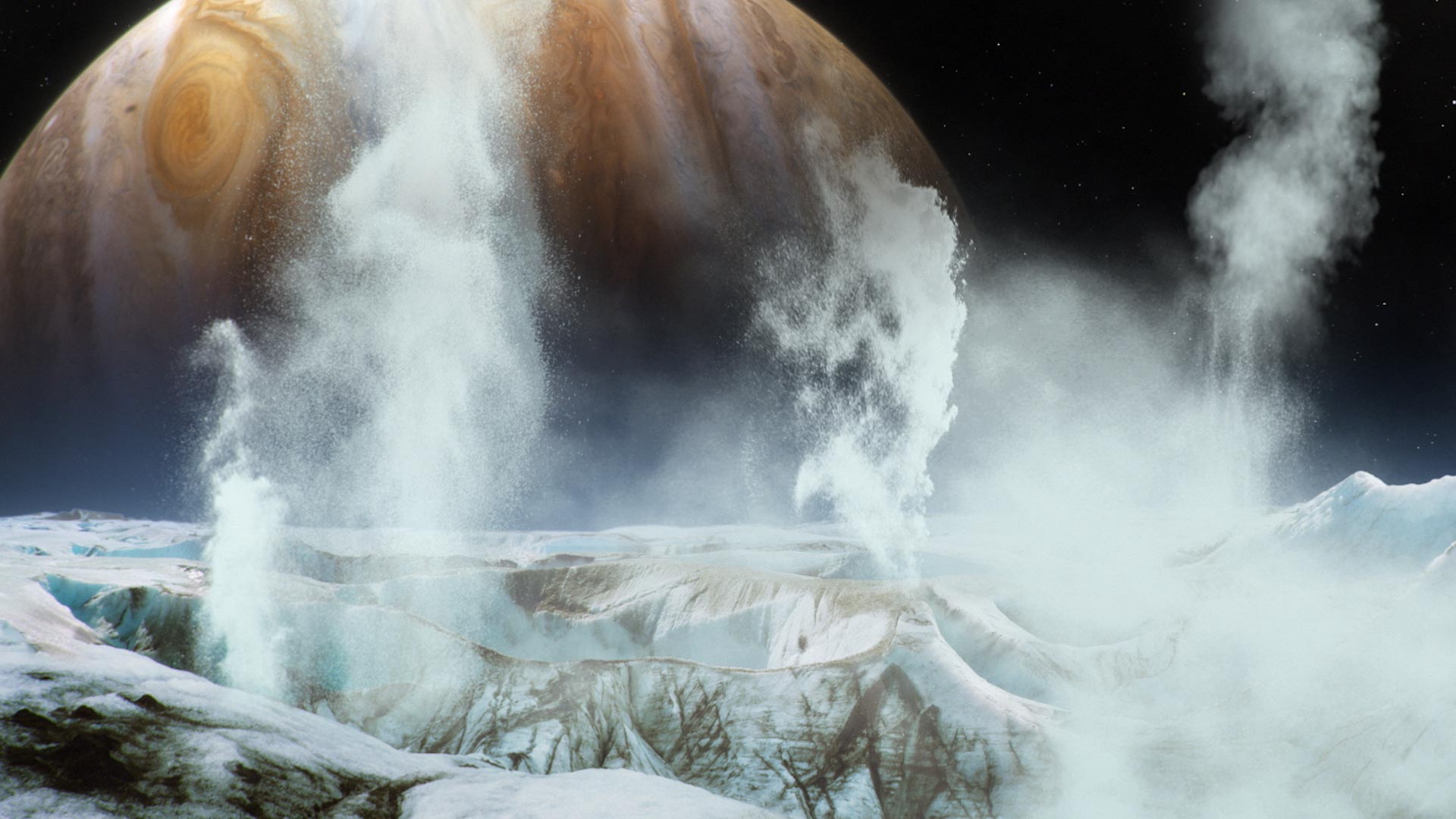
The giant column of vapor, ice particles, and organic molecules spraying from the moon’s south polar region suggested that there’s a liquid water ocean below Enceladus’ ice shell and confirmed the moon is geologically active.
Scientists now are preparing for a mission to another ice-covered ocean world with possible plumes: Jupiter’s moon Europa.Scheduled to launch in 2024, NASA’s Europa Clipper spacecraft will study the moon from its deep interior to its surface to determine whether it has ingredients that make it a viable home for life.
“A lot of people think Europa is going to be Enceladus 2.0, with plumes constantly spraying from the surface,” said Lynnae Quick, a member of the science team behind Clipper’s Europa Imaging System (EIS) cameras.One of the first images of Enceladus’ water jets taken by NASA’s Cassini spacecraft on Nov.Evidence suggests Europa may vent water from its subsurface just like Enceladus.For example, scientists using NASA’s Galileo spacecraft, NASA’s Hubble Telescope, and large Earth-based telescopes have reported detections of faint water plumes or their chemical components at Europa.
First, they’re undeniably cool: “We’re scientists, but we’re also human,” said Shawn Brooks, who is working with Europa Clipper’s Europa Ultraviolet Spectrograph (Europa-UVS) science team and is based at NASA’s Jet Propulsion Laboratory in Southern California.
In other words, the magic of Europa, an archetype for a potentially habitable world, is hidden from view deep within the moon.Compared to Enceladus, which is the size of Texas, Europa is about a quarter of Earth’s size, or a bit smaller than Earth’s moon.
And evidence suggests Europa has a much deeper saltwater ocean than Enceladus, possibly 40 to 100 miles (about 60 to 160 kilometers) deep, which means it could contain about twice as much water as Earth’s oceans.
Through Europa Clipper, scientists will have a chance to test some of their predictions by analyzing the chemical makeup of plumes or the traces they may leave on the surface.
This composite image shows suspected plumes of water vapor erupting at the 7 o’clock position off the limb of Jupiter’s moon Europa.The plumes, photographed by NASA’s Hubble Space Telescope Imaging Spectrograph, were seen in silhouette as the moon passed in front of Jupiter.
Though Europa Clipper scientists are devising a variety of creative strategies to find active plumes when the spacecraft begins exploring Europa in 2031, they’re not relying on them to understand what’s going on inside the moon.Quick added that every instrument aboard Clipper can contribute evidence of habitable conditions below the surface regardless of active plumes.A few examples of how the science team will search for potential plumes include Europa Clipper’s camera suite, EIS.The Europa-UVS will also strive to detect plumes in ultraviolet light, including at the edge of the moon when Europa passes in front of nearby stars, and it can measure the chemical makeup of such plumes.
The Europa Clipper team is set to succeed whether or not researchers find plumes at Europa, though many scientists hope for a spectacular water show to enrich the mission and our understanding of Europa.While Europa Clipper is not a life-detection mission, it will conduct detailed reconnaissance of Europa and investigate whether the icy moon, with its subsurface ocean, has the capability to support life.
Managed by Caltech in Pasadena, California, JPL leads the development of the Europa Clipper mission in partnership with the Johns Hopkins Applied Physics Laboratory in Laurel, Maryland, for NASA’s Science Mission Directorate in Washington.